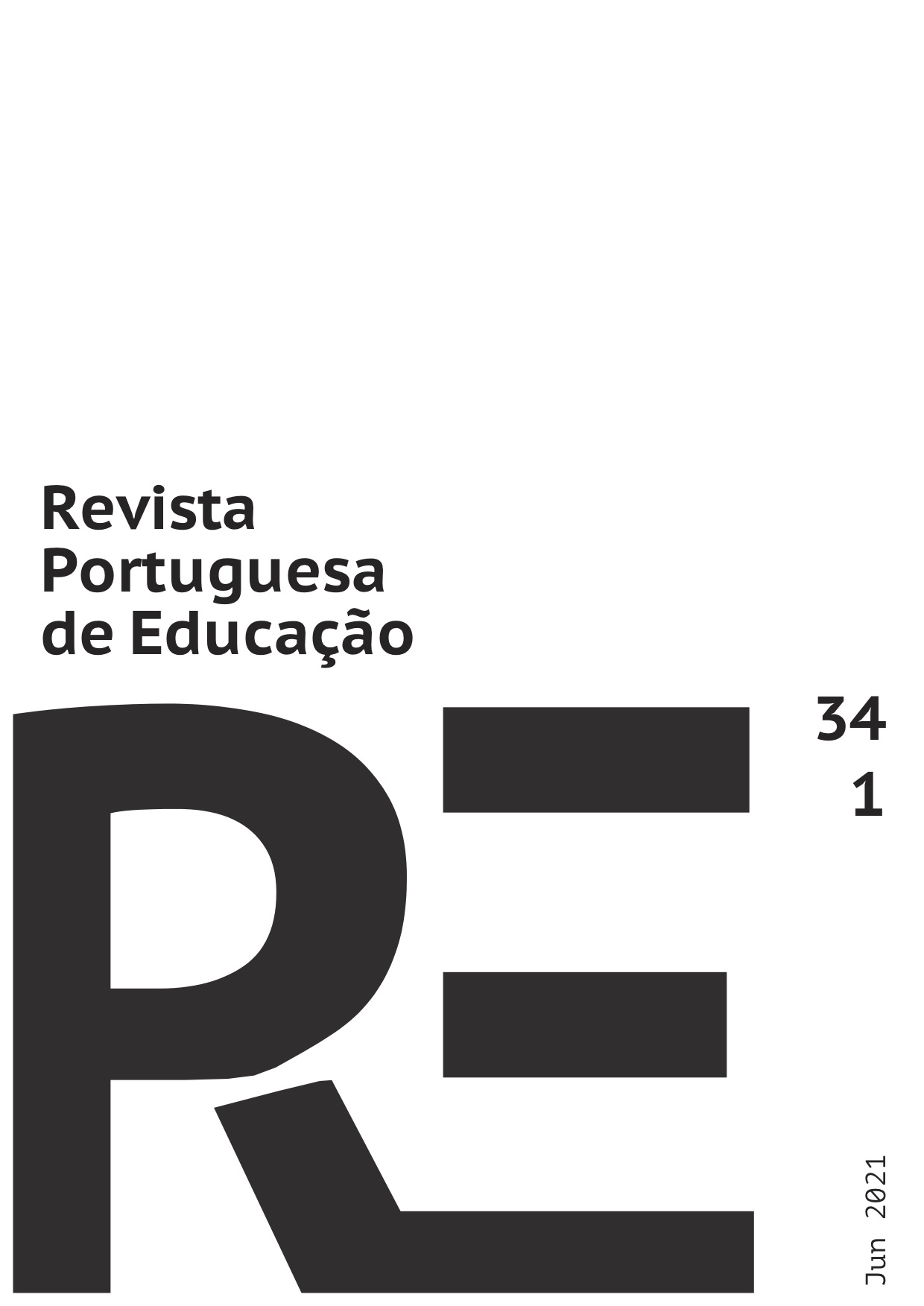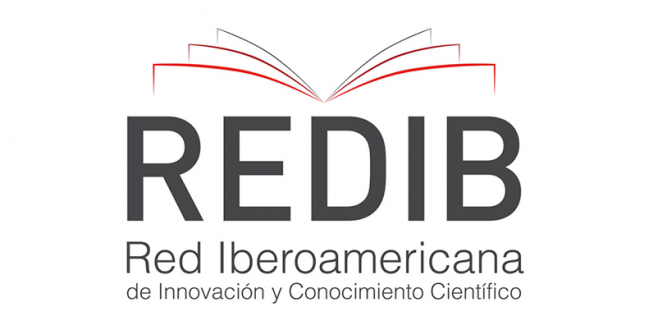Influencing factors in elementary school teachers by proposing homework to students in the Región of Murcia (Spain)
DOI :
https://doi.org/10.21814/rpe.19267Mots-clés :
debefres escolares, alumando, educación primaria, profesoradoRésumé
El objetivo de este artículo es definir los factores que influyen en los maestros de primaria al proponer tareas a los estudiantes. El estudio se realizó con una muestra de 93 docentes en servicio activo en la Región de Murcia (España), que respondieron un cuestionario validado, a través de un juicio experto por el método Angoff (Ricker, 2006), que consistió en 35 preguntas. El análisis de datos relacionados con los factores definidos, tales como: participación familiar, sentimientos personales, decisiones y suposiciones del personal; Tener en cuenta las variables definidas como: frecuencia de tareas, actividades por semana y tareas necesarias, nos ayuda a concluir que existen factores decisivos para el profesorado cuando propone tareas al alumnado y estos factores están condicionados por el número de días por semana que el profesorado propone tareas al alumnado, el número estimado de actividades por semana asignadas al alumnado y el tiempo necesario para completar la tarea.
Téléchargements
Références
Alonso, R. F., Álvarez, J. S., & Fernández, J. M. (2016). Deberes y rendimiento en matemáticas: papel del profesorado, la familia y las características del alumnado. Revista de psicodidáctica, 21(1), 5-23. doi: 10.1387/RevPsicodidact.13939
Bednarz, N.& Proulx, J. (2017). Teachers’ mathematics as mathematics-at-work, Research in Mathematics Education, 19:1, 42-65, DOI: 10.1080/14794802.2017.1287000
Del Valle, M. (2015). Deberes escolares sí o no:¿ es ese el debate?. Escritura pública, (94), 40-43. Retrieved from http://www.notariado.org/liferay/c/document_library/get_file?folderId=12092&name=DLFE-142515.pdf
Doctoroff, G. L., & Arnold, D. H. (2017). Doing homework together: The relation between parenting strategies, child engagement, and achievement. Journal of Applied Developmental Psychology, 48, 103-113.
Du, J., Xu, J., & Fan, X. (2016). Investigating factors that influence students' help seeking in math homework: A multilevel analysis. Learning and Individual Differences, 48, 29-35.
Fan, H., Xu, J., Cai, Z., He, J., & Fan, X. (2017). Homework and students' achievement in math and science: A 30-year meta-analysis, 1986–2015. Educational Research Review, 20, 35-54. Doi: http://dx.doi.org/10.1016/j.edurev.2016.11.003
Gu, L., & Kristoffersson, M. (2015). Swedish lower secondary school teachers’ perceptions and experiences regarding homework. Universal Journal of Educational Research, 3(4), 296-305.
http://dx.doi.org/10.1037/edu0000130
Kalenkoski, C. M., & Pabilonia, S. W. (2016). Does high school homework increase academic achievement?. Education Economics, 1-15. Doi: http://dx.doi.org/10.1080/09645292.2016.1178213
Kelley, T. L. (1935). Essential Traits of Mental Life, Harvard Studies in Education, vol. 26. Harvard University Press, Cambridge.
Kohn, A. (2013). El mito de los deberes: ¿Por qué son perjudiciales para el aprendizaje y la convivencia? Madrid: Kaleida.
Lorenzo Torrecillas, J. J., Agulilar-Parra, J. M., Fernández Campoy, J. M., Alcaraz-Ibañez, M. (2016). Deberes escolares: ventajas e inconvenientes: El eterno debate de las tareas para casa. In Pérez-Fuentes M. C, Gázquez, J. J., Molero, M. M., Martos, A., Simón, M. M., Barragán, A. B. Variables psicológicas y educativas para la intervención en el ámbito escolar. Volumen II. (pp. 109-114). Edita: ASUNIVEP. Retrieved from http://www.formacionasunivep.com/cice2016/files/LIBRO%20VARIABLES.pdf#page=110
Lorenzo-Seva, U. (1999). Promin: A method for oblique factor rotation. Multivariate Behavioral Research, 34(3), 347-365. DOI: 10.1207/S15327906MBR3403_3
Mardia, K. V. (1970), Measures of multivariate skewnees and kurtosis with applications. Biometrika, 57, 519-530. DOI: 10.1093/biomet/57.3.519
Marozzi, M. (2014). Testing for concordance between several criteria. Journal of Statistical Computation and Simulation, 84(9), 1843-1850. DOI: 10.1080/00949655.2013.766189
Mora, T., & Escardíbul, J. O. (2016). Home Environment and Parental Involvement in Homework During Adolescence in Catalonia (Spain). Youth & Society, 0044118X15626050.doi: 10.1177/0044118X15626050
Muthen, B., & Kaplan D. (1992). A comparison of some methodologies for the factor analysis of non-normal Likert variables: A note on the size of the model. British Journal of Mathematical and Statistical Psychology, 45, 19-30. DOI: 10.1111/j.2044-8317.1992.tb00975.x
Noyes, A. (2012). It matters which class you are in: student-centred teaching and the enjoyment of learning mathematics. Research in Mathematics Education, 14:3, 273-290, DOI: 10.1080/14794802.2012.734974
Osborne, J. W. (2015). What is Rotating in Exploratory Factor Analysis? Practical Assessment, Research & Evaluation, 20(2). Available online: http://pareonline.net/getvn.asp?v=20&n=2
PISA (2012). PISA 2012 Results: What Makes Schools Successful? Resources, Policies and Practices (Volume IV). Retrieved from http://www.oecd.org/pisa/deyfindings/pisa-2012-results-volume-iv.htm
PISA (2016). PISA 2015 Results. Singapore tops latest OECD PISA global education survey. Retreived from http://www.oecd.org/education/singapore-tops-latest-oecd-pisa-global-education-survey.htm
Polo Martínez, I., & Bailén, E. (2016). Deberes escolares: El reflejo de un sistema educativo. Avances en Supervisión Educativa, (25). Recuperado de http://www.adide.org/revista/index.php/ase/article/view/543/383.
Rawson, K., Stahovich, T. F., & Mayer, R. E. (2017). Homework and achievement: Using smartpen technology to find the connection. Journal of Educational Psychology, 109(2), 208-219.
Silinskas, G., & Kikas, E. (2017). Parental Involvement in Math Homework: Links to Children’s Performance and Motivation. Scandinavian Journal of Educational Research, 1-21.
Snead, D. (2016). Middle School Teachers’ Perceptions Regarding the Motivation and Effectiveness of Homework. Journal of Inquiry and Action in Education, 7(2), 3.
Snead, D., & Burris, K. G. (2016). Middle School Teachers' Perceptions Regarding the Motivation and Effectiveness of Homework. Journal of Inquiry and Action in Education, 7(2), 62-80.
Suárez, N., Regueiro, B., Epstein, J. L., Piñeiro, I., Díaz, S. M., & Valle, A. (2016). Homework involvement and academic achievement of native and immigrant students. Frontiers in psychology, 7.
Ten Berge, J. M., & Kiers, H. A. (1991). A numerical approach to the approximate and the exact minimum rank of a covariance matrix. Psychometrika, 56(2), 309-315. DOI: 10.1007/BF02294464
Timmerman, M. E., & Lorenzo-Seva, U. (2011). Dimensionality assessment of ordered polytomous items with parallel analysis. Psychological methods, 16(2), 209. DOI: 10.1037/a0023353.
Valle, A., Pan, I., Regueiro, B., Suá- rez, N., Tuero, E. y Nunes, A.R. (2015). Predicting approach to home- work in Primary school students.Psi- cothema, 27(4), 334-340. Retrieved from http://www.cop.es/infocop/pdf/2720.pdf
Xu, J., Fan, X., Du, J., & He, M. (2017). A study of the validity and reliability of the parental homework support scale. Measurement, 95, 93-98.
Xu, J., Yuan, R., Xu, B., & Xu, M. (2016). Modeling students' interest in mathematics homework. The Journal of Educational Research, 109(2), 148-158. Doi: http://dx.doi.org/10.1080/00220671.2014.928252
Zurcher, D. M., Phadke, S., Coppola, B. P., & McNeil, A. J. (2016). Using Student-Generated Instructional Materials in an e-Homework Platform. Journal of Chemical Education, 93(11), 1871-1878.Doi: 10.1021/acs.jchemed.6b00384
Téléchargements
Publiée
Comment citer
Numéro
Rubrique
Licence
© Portuguese Journal of Education 2021

Ce travail est disponible sous licence Creative Commons Attribution - Partage dans les Mêmes Conditions 4.0 International.
1. Autores conservam os direitos de autor e concedem à revista o direito de primeira publicação, com o trabalho simultaneamente licenciado sob a Licença Creative Commons Attribution 4.0 CC-BY-SA que permite a partilha do trabalho com reconhecimento da autoria e publicação inicial nesta revista;
2. Autores e autoras têm autorização para assumir contratos adicionais separadamente para distribuição não-exclusiva da versão do trabalho publicada nesta revista (ex.: depositar em repositório institucional ou como capítulo de livro), com reconhecimento de autoria e publicação inicial nesta revista;
3. Autores e autoras têm permissão e são estimulado/as a publicar e distribuir o seu trabalho online (ex.: em repositórios institucionais ou na sua página pessoal), já que isso pode aumentar o impacto e a citação do trabalho publicado (Veja O Efeito do Acesso Livre).
Esta obra está licenciada sob uma Licença Creative Commons - Atribuição Compartilhamento pela mesma Licença Internacional 4.0




















